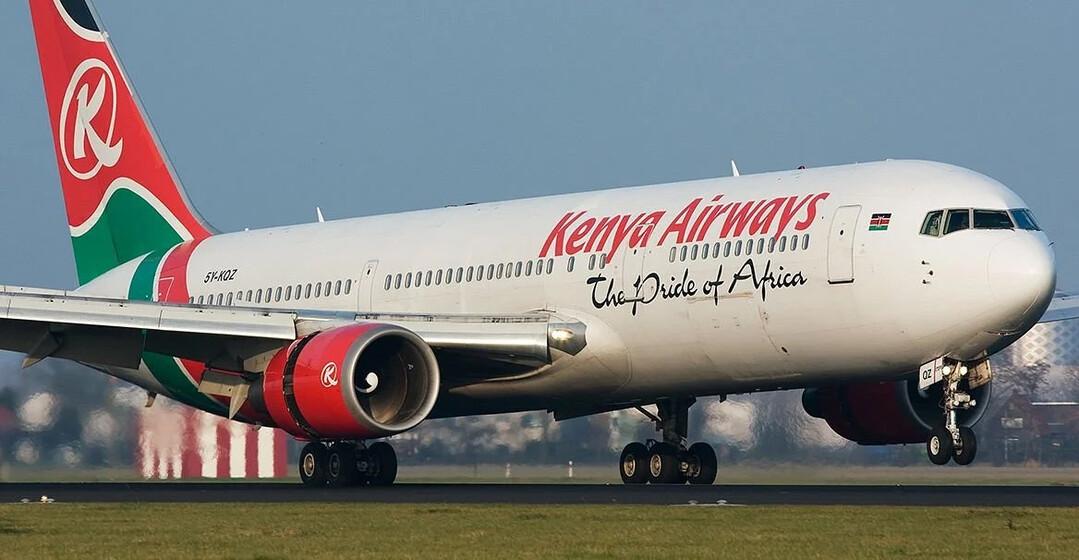
Kenya – Kenya Airways (KQ) has announced its first annual profit in over a decade for the fiscal year 2024, marking a significant turning point for the national carrier which has been grappling with financial headwinds for years. While improved operational performance played a crucial role, analysts point to the substantial impact of a strengthening Kenyan Shilling (KES) as a key factor in pushing the airline into the black.
Kenya Airways CEO Allan Kilavuka, during the results announcement earlier this week, highlighted the airline's strong operational efficiency. "Our earnings before interest, tax, depreciation, and amortisation (EBITDA) ratio reached 20% in 2024, surpassing the industry average of 17% and demonstrating a robust performance throughout the year," he stated. He further emphasized the historical significance of the result, calling it "the highest profit that this company has reported in its history."
The airline's journey to this point has been fraught with financial difficulties, largely stemming from a significant debt burden incurred in 2017 following an $800 million investment in new aircraft and an engine. This debt, coupled with the severe downturn in international travel during the COVID-19 pandemic, a weakening shilling, and rising global interest rates, pushed the company into insolvency by the following year. Kenya Airways also faced increasing competition from well-established African and Middle Eastern carriers like Ethiopian Airlines, Emirates, and Turkish Airlines, alongside escalating operational costs that resulted in losses per passenger.
However, recent developments signal a positive shift. Sindy Foster, principal managing partner at aviation consultancy firm Avaero Capital Partners, attributes the 2024 profitability to a combination of factors, primarily the airline's internal restructuring program, "Project Kifaru." This initiative, she explained to African Business, "focused on customer experience, operational excellence, and cost containment and has been instrumental in restoring KQ’s operational viability and financial performance." The improved financial standing allowed Kenya Airways to resume trading on the Nairobi Securities Exchange in January after lengthy suspensions totaling approximately four and a half years.
A significant tailwind for Kenya Airways' financial recovery has been the marked appreciation of the Kenyan Shilling against the US dollar. Since the beginning of 2024, the KES has strengthened by over 25%, a development partly attributed to the Central Bank of Kenya's strategic interventions to bolster foreign exchange reserves and stabilize the national currency. This currency appreciation had a direct positive impact on KQ's financial results, adding 1.2 billion KES ($9.3 million) to its balance sheet in 2024. This stands in stark contrast to 2023, where the shilling's depreciation had a negative impact of 19.1 billion KES ($148 million), further deepening the airline's losses.
Foster elaborated on this crucial aspect, stating, "While KQ’s operational turnaround provided the foundation for improved results – evidenced by record revenues, a return to operating profit, and tangible service improvements – the forex gains ultimately tipped KQ into profitability, reversing the huge exchange losses that had plagued prior years."
However, this reliance on favorable exchange rates introduces an element of uncertainty. "This underscores a cautionary point: Kenya Airways’ financial health is still highly sensitive to currency movements. The 2024 profit, while a remarkable milestone, is partly the product of favourable forex conditions that may not persist," Foster warned.
Looking ahead, maintaining sustainable profitability will require Kenya Airways to focus on strengthening its core business operations and proactively mitigating its exposure to foreign exchange fluctuations. Foster emphasized key strategies for the airline, including "reducing foreign debt, enhancing USD revenue streams, and diligently maintaining its currency and risk hedges."
The return to profitability offers a glimmer of hope for Kenya Airways and the Kenyan economy. However, the airline must navigate the inherent volatility of currency markets and continue its efforts to build a resilient and efficient operation to ensure long-term success in a competitive African aviation landscape.
[Copyright (c) Global Economic Times. All Rights Reserved.]



























